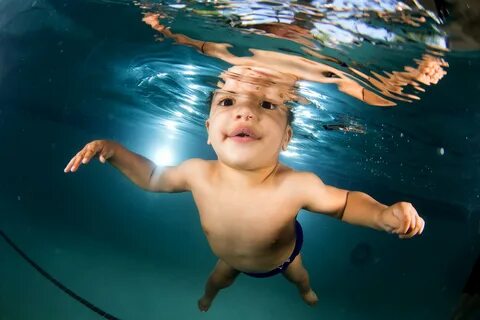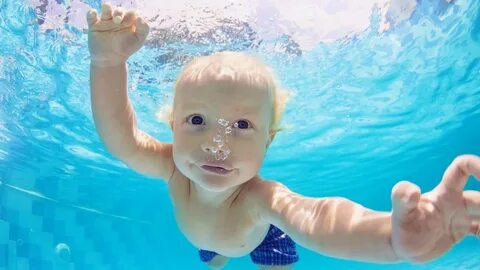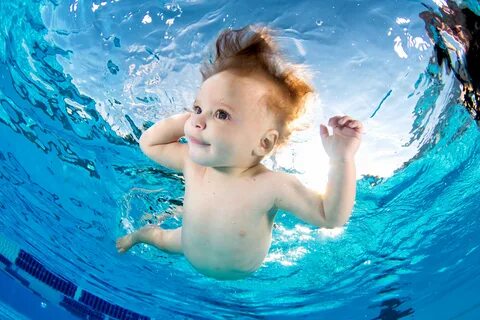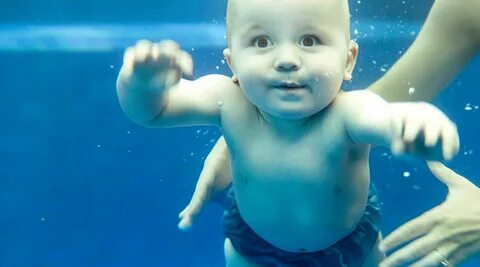Learning to swim is an essential life skill that can provide numerous benefits, including improved physical fitness, increased confidence, and enhanced safety in and around water. Starting early can be an excellent way to introduce babies to the water and help them develop a love for swimming.


When a baby learns to swim for the first time, it can be an exciting and memorable experience. It’s important to note that babies have a natural instinct to hold their breath when underwater and can even swim short distances. However, it’s still crucial to take proper precautions to ensure the baby’s safety.

The first step in teaching a baby to swim is to acclimate them to the water gradually. Start with a shallow pool or bathtub, and let the baby get used to the sensation of being in the water. Hold them close and support their head and neck to ensure they don’t accidentally ingest any water.

Once the baby is comfortable, gradually move to deeper water and introduce them to gentle kicking and arm movements. Use toys or floatation devices to make the experience more enjoyable and engaging for the baby.


It’s important to keep the water temperature comfortable, as babies can quickly become chilled in the water. Also, be mindful of the baby’s energy levels and avoid staying in the water for too long.

As the baby becomes more confident in the water, they can progress to more advanced skills, such as floating and swimming independently. It’s essential to always supervise the baby and ensure that they’re safe in and around the water.


In conclusion, teaching a baby to swim for the first time can be a fun and rewarding experience for both the baby and the parent. It can help the baby develop physical and cognitive skills, as well as a love for swimming that can last a lifetime. With proper precautions and guidance, the baby can learn to be safe and confident in the water, setting them up for a lifetime of enjoyment and safety in aquatic environments.

Baby learns to swim for the first time:
It is truly astonishing to witness a two-year-old child swim with the skill and grace of a professional athlete, an ability that even many adults have not been able to achieve. The sheer determination and innate talent displayed by these young swimmers is a remarkable phenomenon that leaves us in awe.
Swimming is a complex sport that requires a combination of physical strength, technique, and mental focus. For adults, it often takes years of training, practice, and dedication to reach a high level of proficiency in the water. However, some exceptional toddlers seem to possess an extraordinary natural affinity for swimming, surpassing the abilities of their adult counterparts.
One possible explanation for this phenomenon lies in the fact that young children have a higher natural buoyancy due to their higher body fat percentage. This inherent buoyancy, combined with their smaller size and lighter weight, allows them to effortlessly glide through the water. Additionally, their undeveloped muscles and joints are more flexible, enabling them to execute fluid movements and maintain excellent body alignment in the water.
Another crucial factor contributing to a toddler’s impressive swimming skills is their fearless and uninhibited approach to water. Unlike adults who may have developed fears or anxieties surrounding swimming, young children are often fearless and open to new experiences. They embrace the water without reservation, allowing them to explore and learn in a way that adults often struggle to replicate.
Moreover, toddlers are incredibly quick learners with sponge-like minds. They absorb information and mimic movements effortlessly, making it easier for them to pick up swimming techniques and adapt their bodies to the water environment. They are also more receptive to instruction and correction, eagerly implementing feedback to improve their swimming abilities.
It is important to note that while some toddlers may display exceptional swimming abilities, it does not imply that they are invincible or should be left unsupervised in the water. Swimming, especially for young children, should always be done under proper supervision and within safe environments.
In conclusion, the sight of a two-year-old swimming like a professional athlete is indeed astonishing. Their natural buoyancy, flexibility, fearlessness, and rapid learning abilities contribute to their exceptional swimming skills. While adults may marvel at their talent, it is crucial to remember that swimming safety should always be the primary concern.



